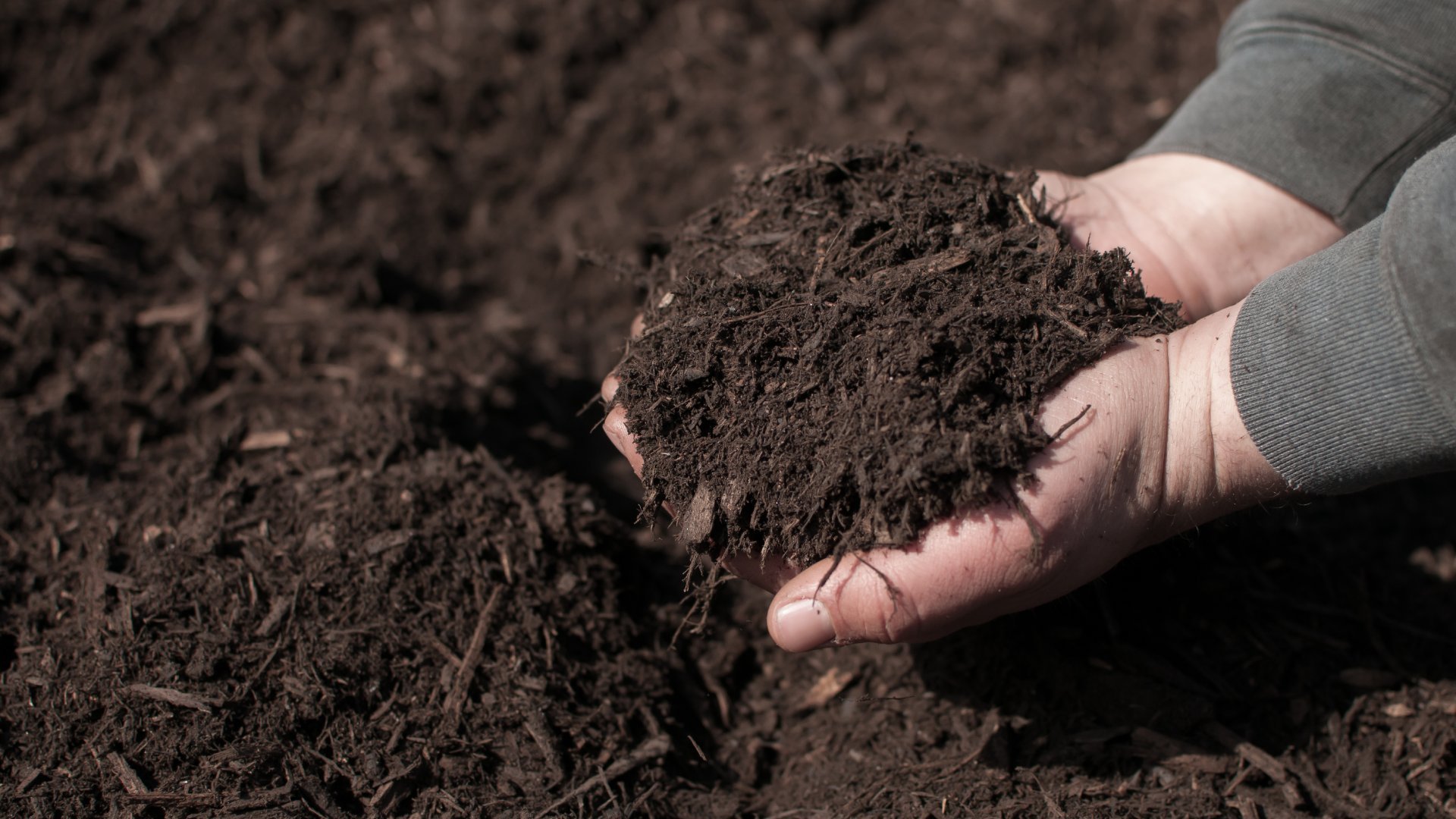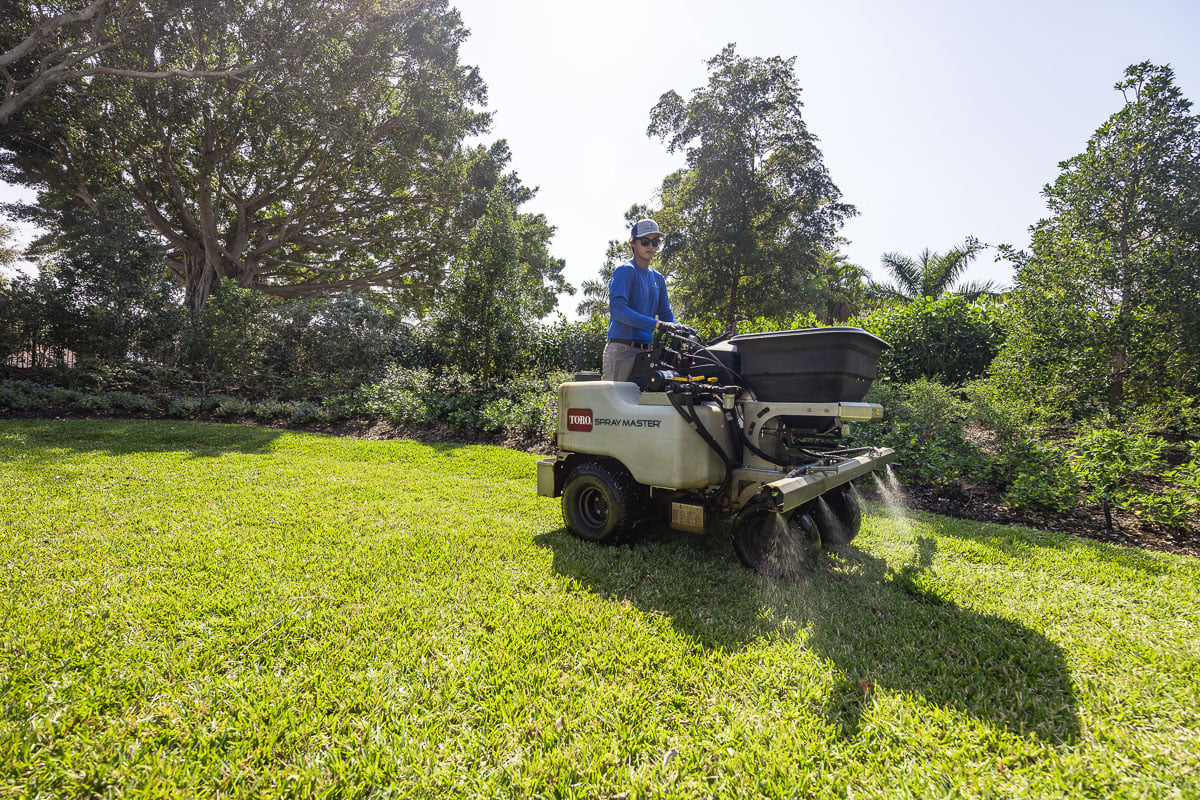
Preparing Your Tropical Plants for Fall and Winter in Florida
If you live in Sarasota and you get a sudden cold snap in the winter, it’s a cool excuse to do winter stuff like sip cocoa and pull on warm socks.
What about your tropical plants? Feeding them cocoa isn’t advised, and crotons don’t like socks. They find them itchy.
How to protect tropical plants from the cold? Cover them up, or move them to a more protected area. Don’t prune them too late in the season. Water them before a freeze. Cut them back if they really hate the cold. And if they do get hit by a sudden freeze, there are definitely some dos and don’ts.
Keep reading to find out more about winter tropical plant care, including:
Covering plants to protect them
Moving plants to safety
Time your pruning to protect plants
Cutting back can help
Watering before a freeze
The magic of mulch
Don’t fertilize too late
What to do about brown palm fronds
How copper plays a part
What if all the leaves drop off?
How pro plant health care can help
First, the Good News
No need to panic. Yes, those stunning tropical plant leaves look kind of fragile but most of our plant material can survive the occasional dip in temperature.
Yes, your croton might drop its leaves, which can be a bit scary. But it’s part of landscaping in Florida — at least, in areas of Florida that can get chilly in the winter. It rarely dips below 39 degrees here in Sarasota, but that feels pretty frosty to tropical plants that thrive in the heat.
Plants prefer to adjust to temperature changes gradually, over time. When they’re cozy and warm in the Sarasota sun, then a sudden freeze moves in without even giving them any warning (rude!) they get a bit cranky.

You can help.
How to protect plants from the cold?
Cover Them Up
Sure, this seems obvious, but it’s easy to forget when you don’t have to do it very often.
You can get fancy and buy a protective frost cloth at the garden center for protecting plants from the cold, but stuff you have around the house works fine, too. Grab a blanket, a sheet, cardboard or newspaper. Secure it at the bottom with rocks or bricks so it doesn’t blow off.
Set a reminder for yourself to remove the covering in the morning once the sun comes up. You don’t want your plants to get too hot under there.
Scoot Them to Safety
Protecting potted plants from the cold is as easy as bringing them inside or moving them to a protected area like a garage or shed.

Put Down Those Pruners to Protect Plants for Winter
Have some willpower, please, and keep your pruning to earlier in the season. When you prune, your plant instinctively puts out a spurt of new growth. That new growth is tender and more susceptible to injury from cold than the rest of the plant.
Don’t make the poor things vulnerable. Avoid pruning in late summer or early fall.

Cut Some Plants Back
Some tropical plants really hate the cold, even more than others. For these fragile beauties, the kindest thing seems pretty cruel — cut them back.
Heliconia, that rainforest beauty with the stunning red bracts, really hates the cold. She’s shivering right now just thinking about it.
Take a deep breath and cut that heliconia down to the ground before a winter cold snap.
It’ll come back, all happy again, in the spring.

Protecting Plants for Winter: Water Before a Freeze
If you’re doubtful about this one, we get it. If you water before a freeze, won’t the water just freeze, encasing your poor plant in a cube of ice like Han Solo in that block of carbonite in Star Wars?
Nope. (Good imagination, though.) Watering before a freeze can actually help protect plants from the cold.
Wet soil will absorb more heat during the day and radiate it during the night. The key is watering early in the day before the expected cold snap, so that wet soil has a chance to soak up heat from the day.
The Magic of Mulch
A 3-5 inch layer of mulch can help keep the soil temperature consistent and prevent it from freezing solid.
Hardwood mulch is a great multitasker — it also conserves water, keeps weeds from easily sprouting and as it decomposes over time, adds nutrients to your soil.
Plan on a fresh delivery in November to keep plants cozy through the winter.

Don’t Fertilize Too Late in the Season
We have nothing against foraging in the fridge at midnight for that last slice (or three) of leftover pizza. But late snacking isn’t good for your plants when winter’s around the corner.
If you fertilize too late in the fall, that feeding can cause a late flush of tender new growth that’s more susceptible to cold injury.
But keep up with that all-important fertilizer the rest of the year as part of your tropical plant care. Healthy, well-nourished plants will tolerate cold temperatures better and recover from injury faster.

Brown Palm Fronds? Don’t Freak Out
When a cold snap hits, your palm fronds might not like it. So to let you know they’re miffed, they turn brown.
When your palm fronds turn brown, you don’t like it. But don’t rush out there with your big pruners and start lopping them off.
Be patient and take a close look. Are any parts of them still green? If so, leave them on the plant as long as possible. That green part will help with the photosynthesis needed for new growth.
Palms are kind of poky, starting their growing season after other shrubs and trees begin their spring growth flushes. Wait for the affected palm to produce new growth, and definitely don’t remove the brown fronds if there’s still a chance of another freeze.

Winter Tropical Plant Care: Try Copper
When a palm suffers from cold damage it’s susceptible to bacteria or fungal infections. Treating it with a copper fungicide can help prevent that.
All the Leaves Fell Off! What Now?
Your croton is naked and you’re freaking out. Understandable. But don’t give up on the poor shivering thing.
If crotons get too cold, they drop all those pretty leaves and are standing out there in just their stems.
If you want to rush out there with a croton-sized robe, feel free. But don’t throw it away, assuming it’s dead. These leaves will likely grow back, eventually.
By March you should see signs they’re bouncing back. Those fantastic yellow, orange and red leaves will be back by April.
Tropical Plant Care: How Pros Can Help
A sudden freeze can throw your tropical plants for a loop. But honestly, they face a host of perils throughout the year.
Landscaping in Florida is filled with challenges. Diseases strike. Hungry bugs attack. Drought happens one minute, torrential rains the next.
You want to keep your tropical plants as healthy as possible. Plants weakened by disease or hungry bugs are less likely to survive a cold snap.
Invest in comprehensive Sarasota plant health care services, and Tropical Gardens plant experts will keep your hungry plants fertilized and monitor and treat them for any diseases or insect infestations.

Want to Protect Your Tropical Plants for the Winter? Talk to Us
Try not to stress about your plant babies shivering in the cold.
Chances are, they’ll be fine. But you can do your part by making sure they’re healthy enough to survive the trauma.
That means proper pruning, regular fertilizing, and keeping a vigilant eye out for pests and diseases — all part of landscaping services in Sarasota FL.
If that sounds like a lot of work, you’re right. But we love this stuff.
Give us a call or fill out our form today! Our team of Sarasota plant experts can’t wait to care for your landscape plants, keeping them happy, healthy and beautiful year round.



